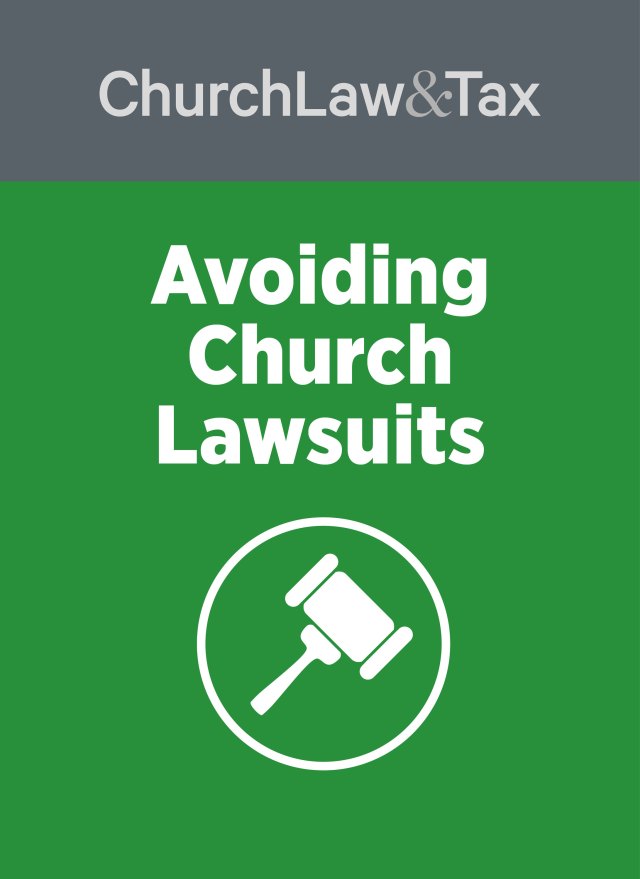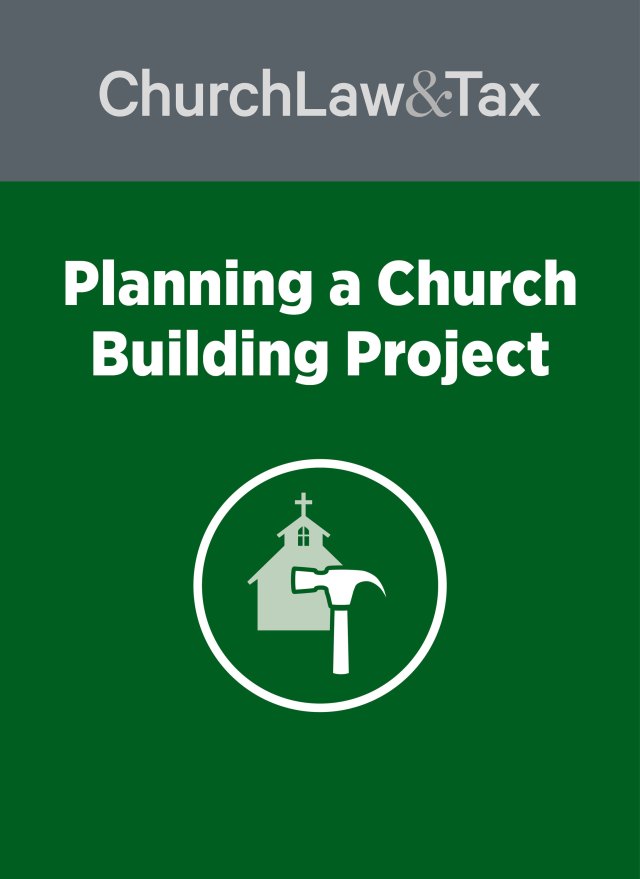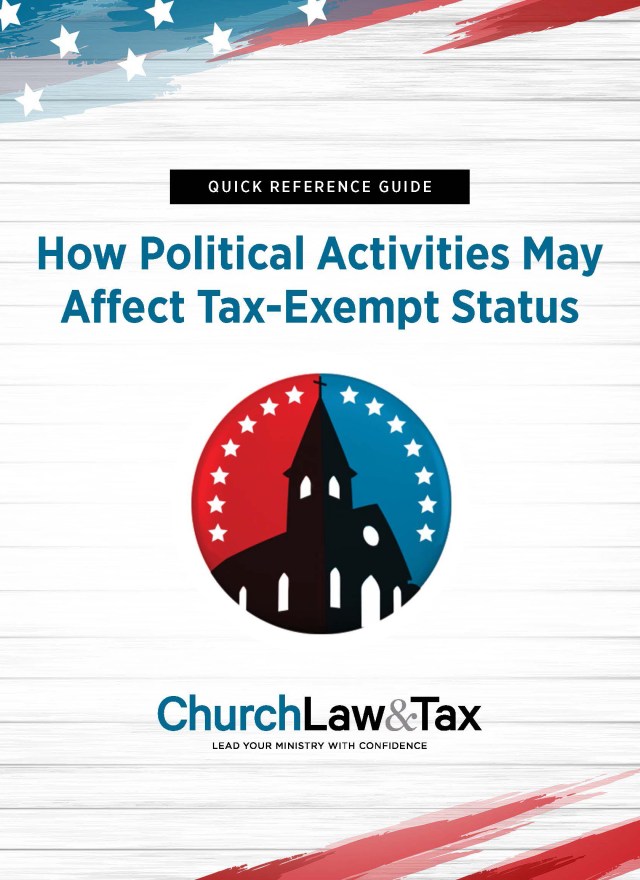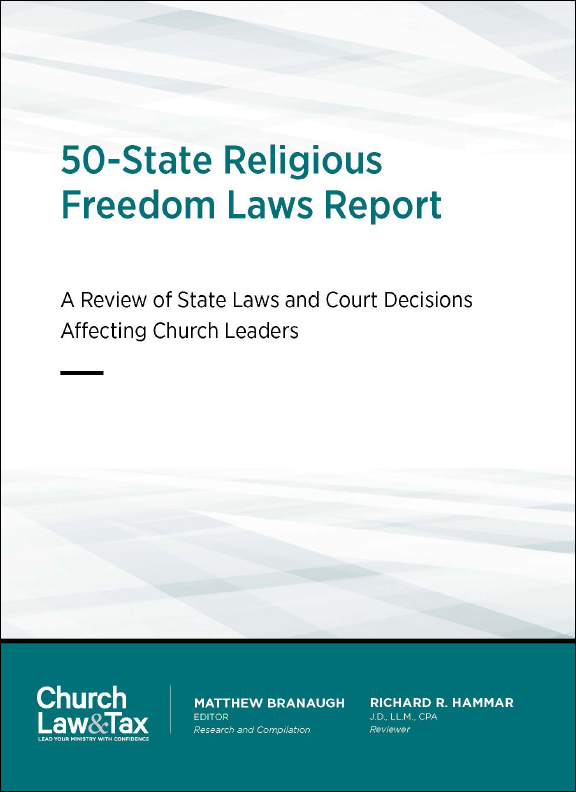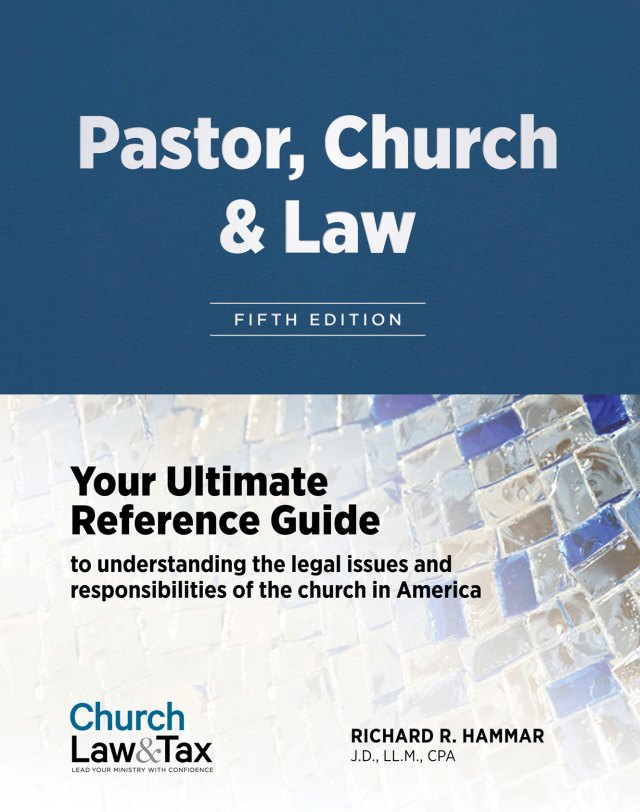Key point 7-08. Most cities have enacted building codes that prescribe minimum standards in the construction of buildings. The courts have ruled that these laws may be applied to churches so long as they are reasonably related to the promotion of public health and safety.
The Supreme Court of the United States ruled that a city ordinance containing strict limitations on the display of signs by churches and some other charities constituted a content-based restriction on speech in violation of the First Amendment’s free speech clause. The town of Gilbert, Arizona (or Town), adopted a comprehensive “Sign Code” governing the manner in which people may display outdoor signs. The Sign Code prohibits the display of outdoor signs anywhere within the Town without a permit, but it then exempts 23 categories of signs from that requirement. This includes any “Temporary Sign intended to direct pedestrians, motorists, and other passersby to a qualifying event.” A “qualifying event” is defined as any “assembly, gathering, activity, or meeting sponsored, arranged, or promoted by a religious, charitable, community service, educational, or other similar non-profit organization.” Temporary directional signs may be no larger than six square feet. They may be placed on private property or on a public right-of-way, but no more than four signs may be placed on a single property at any time. And, they may be displayed no more than 12 hours before the “qualifying event” and no more than 1 hour afterward. Other exemptions, such as signs communicating a political or ideological message, were much less stringent.
The Good News Community Church (Church) and its pastor wanted to advertise the time and location of their Sunday church services. The Church is a small, cash-strapped entity that owns no building, so it holds its services at elementary schools or other locations in or near the Town. In order to inform the public about its services, which are held in a variety of different locations, the Church began placing 15 to 20 temporary signs around the Town, frequently in the public right-of-way abutting the street. The signs typically displayed the Church’s name, along with the time and location of the upcoming service. Church members would post the signs early in the day on Saturday and then remove them around midday on Sunday. The display of these signs requires little money and manpower, and thus has proved to be an economical and effective way for the Church to let the community know where its services are being held each week.
This practice caught the attention of the Town’s Sign Code compliance manager, who twice cited the Church for violating the Code. The first citation noted that the Church exceeded the time limits for displaying its temporary directional signs. The second citation referred to the same problem, along with the Church’s failure to include the date of the event on the signs. Town officials even confiscated one of the Church’s signs, which the pastor had to retrieve from the municipal offices.
The pastor contacted the Sign Code Compliance Department in an attempt to reach an accommodation. His efforts proved unsuccessful. The Town’s Code compliance manager informed the Church that there would be “no leniency under the Code” and promised to punish any future violations.
Shortly thereafter, the Church and its pastor (the “plaintiffs”) filed a complaint in a federal district court in Arizona, arguing that the Sign Code abridged their freedom of speech in violation of the federal Constitution. The court rejected the plaintiffs’ claims, as did a federal appeals court. The plaintiffs appealed to the Supreme Court.
The Court began its opinion by noting that “the First Amendment … prohibits the enactment of laws abridging the freedom of speech.” As a result, a city “has no power to restrict expression because of its message, its ideas, its subject matter, or its content.” Content-based laws that target speech based on its communicative content “are presumptively unconstitutional and may be justified only if the government proves that they are narrowly tailored to serve compelling state interests.”
The Court concluded:
The Town’s Sign Code is content based on its face. It defines “Temporary Directional Signs” on the basis of whether a sign conveys the message of directing the public to church or some other qualifying event … . Because the Town’s Sign Code imposes content-based restrictions on speech, those provisions can stand only if [the Town] proves that the restriction furthers a compelling interest and is narrowly tailored to achieve that interest … . Thus, it is the Town’s burden to demonstrate that the Code’s differentiation between temporary directional signs and other types of signs, such as political signs and ideological signs, furthers a compelling governmental interest and is narrowly tailored to that end. The Town cannot do so. It has offered only two governmental interests in support of the distinctions the Sign Code draws: preserving the Town’s aesthetic appeal and traffic safety. Assuming for the sake of argument that those are compelling governmental interests, the Code’s distinctions fail … .
The Court observed that its decision “will not prevent governments from enacting effective sign laws” since the Town “has ample content-neutral options available to resolve problems with safety and aesthetics.” For example, the Town’s current Code “regulates many aspects of signs that have nothing to do with a sign’s message: size, building materials, lighting, moving parts, and portability. And on public property, the Town may go a long way toward entirely forbidding the posting of signs, so long as it does so in an evenhanded, content-neutral manner.” Further, “a sign ordinance narrowly tailored to the challenges of protecting the safety of pedestrians, drivers, and passengers—such as warning signs marking hazards on private property, signs directing traffic, or street numbers associated with private houses—well might survive strict scrutiny.” But “the signs at issue in this case, including political and ideological signs and signs for events, are far removed from those purposes. They are facially content based and are neither justified by traditional safety concerns nor narrowly tailored.”
What This Means For Churches:
This case will be relevant to any church that encounters governmental opposition to the display of “content based” signs that are intended to communicate a message. Reed v. Town of Gilbert, 2015 WL 2473374 (U.S. 2015).
